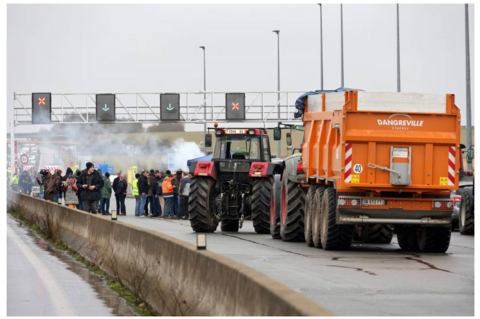Look to France for a peek at the green future

It’s interesting to look at what other countries are doing or planning in relation to climate change – there’s always something to learn. One of the most interesting studies I’ve seen has been a recent report for French president Macron about how France could reach net-zero by 2050.
The French study dismisses the notion we could undo economic growth – there is no chance that the world will revert to a 19th-century standard of living. Countries like France and ourselves need robust economic performance to fund the large investments needed to manage transition to clean energies, and enable exit from use of fossil fuels over the coming decade for our heat and power needs. We also need to invest in the research that is likely to give us new technologies, which will aid in the energy transition over the medium term.
While France and Ireland face some similar challenges, there are also important differences. Unlike Ireland, where gas and coal still provide a lot of our electricity generation, France went nuclear about 60 years ago. So France’s electricity system is already largely decarbonised. Although they will need to invest to replace these ageing power plants, but that’s not about curbing carbon emissions.
France already has excellent public transport. The French study suggests there won’t be a huge cost to replacing petrol and diesel cars with electric ones, as the extra cost of electric vehicles is falling rapidly.
Instead, the biggest cost of the energy transition in France will arise from the need to retrofit housing and commercial buildings, as well as installing heat pumps to replace oil and gas heating. Because much of the housing stock, especially in urban areas, consists of apartments, it’s probable that much retrofitting will involve internal insulation rather than external wrapping of the building fabric.
France has significantly more area under forestry than Ireland. Between 1990 and 2005 the conversion of additional farmland to woodland saw a big increase in the amount of carbon which was sequestered in France – that’s something we need to copy. However, the recent impact of climate change has brought intense temperatures and drought, contributing to catastrophic forest fires in southern France, that released carbon back into the atmosphere.
Managed forestry has long been the norm in France, with many villages having their own ‘forest of the domain’. Poor management has contributed to some recent big wild fires. The French report does argue that new planting needs to include more heat and drought-tolerant species, that will thrive under the changing climatic conditions. That’s also a lesson for Ireland – in planting long-lived trees, we need to supplement native varieties with variants from places whose climate today is closer to what ours will be tomorrow.
Although farming emissions account for one-fifth of the French total, this is one area where the French report appears weak. For example, it doesn’t take account of research showing the role feed additives are likely to play by the 2030s in reducing emissions of methane from livestock.
The French study is also concerned about the probable impact of the transition on French jobs, given how many now work on producing fossil fuel cars. For Ireland, thankfully, job losses from the energy transition are likely to be low – our biggest problem will be finding enough people with the necessary skills to do our retrofits and invest in renewable electricity.
Unlike investments that enhance labour productivity, investments in transitioning from carbon don’t bring the same bounce in economic performance. As a result, the French report suggests that while the energy transition is taking place, economic growth will be reduced by around 0.3 percentage points each year because of the shift in investment priorities, or a cumulative cost of around 2-3 per cent. For Ireland, the sums are likely to be somewhat similar. Of course, this price is much less than the long-term cost to our societies of continuing global warming.
The cost of climate action in one country may be impacted by what happens in other states.
With fairly similar measures being adopted across the EU, initially supply constraints on key equipment and materials that we are all competing to buy could lead to inflationary pressures. Slightly higher inflation would mean higher EU interest rates, making it more expensive to borrow to finance the investment. Instead a limited rise in taxation will be needed.
However, in pursing common strategies there will be a large scale market for wind turbines, solar panels and electric cars, resulting in product innovation, ultimately reducing the cost of the energy transition.


